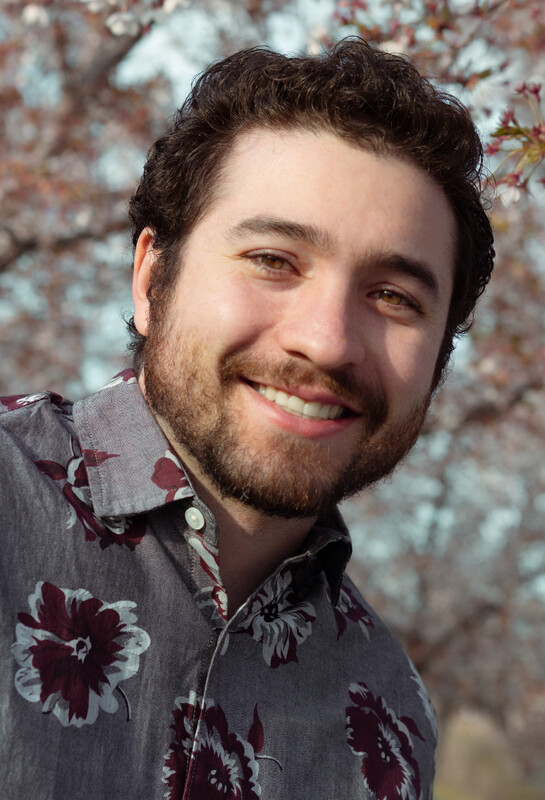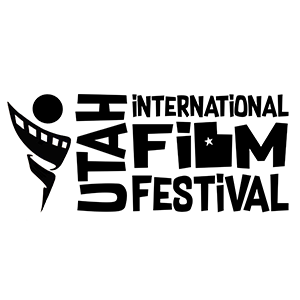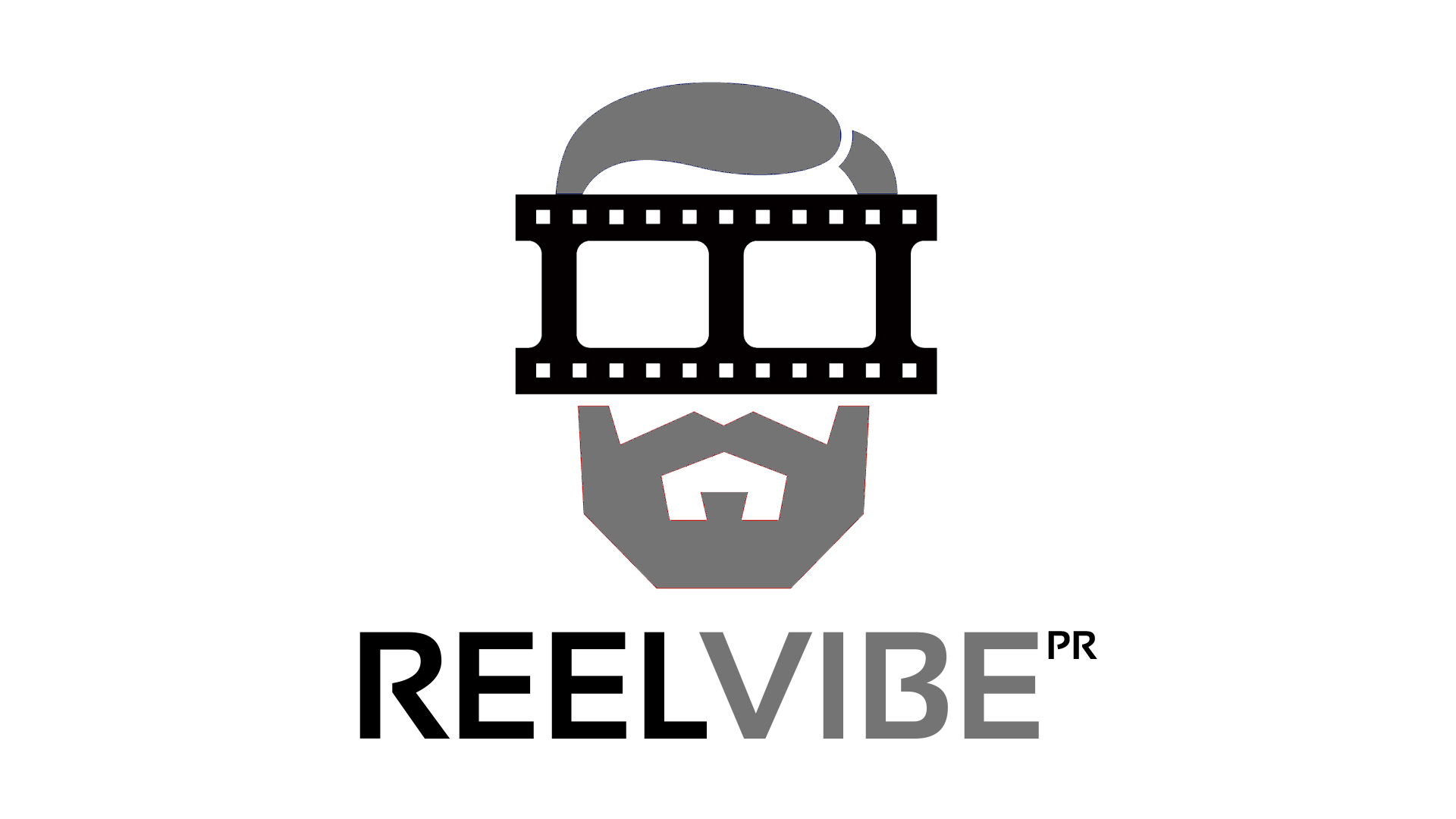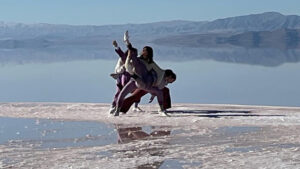The Resurrection of ’The Time Machine’
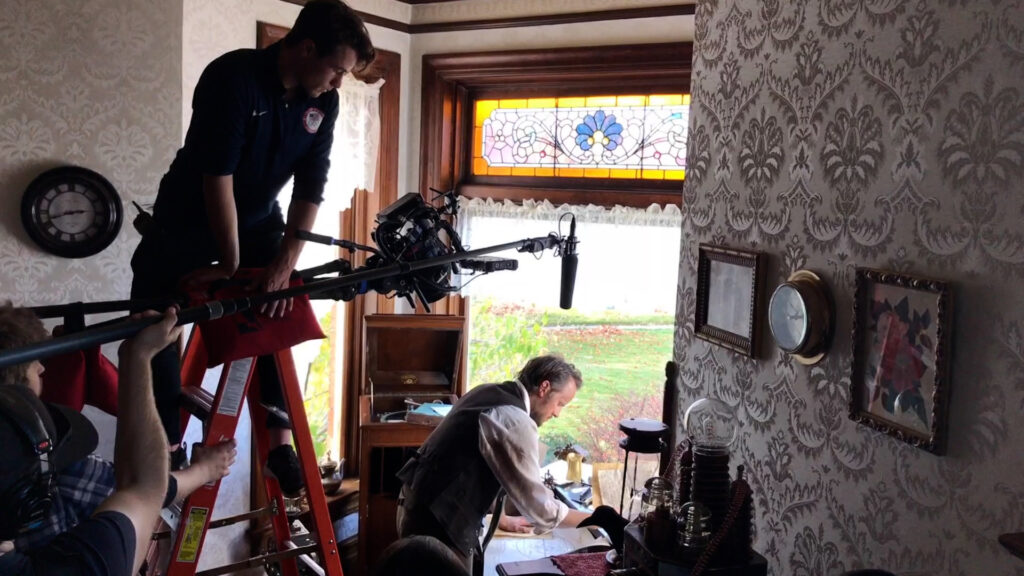
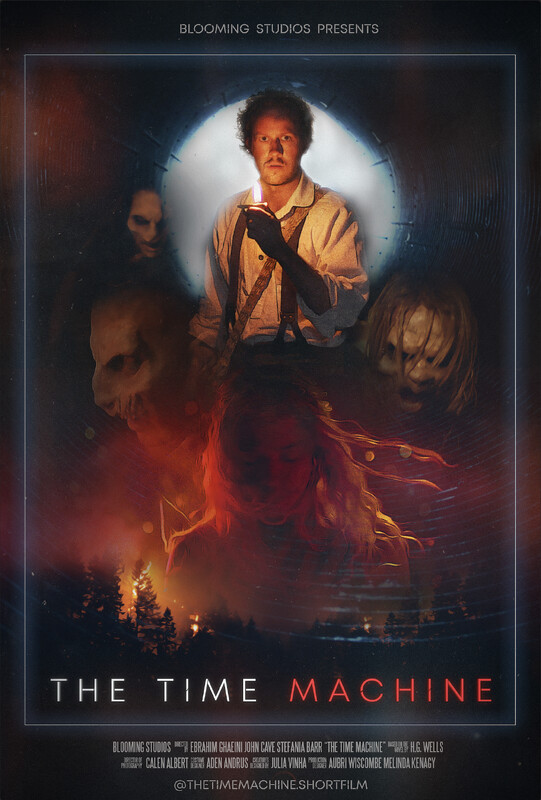
Ebrahim Ghaeini, the creative mind behind the short film “The Time Machine,” recently shared insights into the making of this 11-minute sci-fi gem. Adapted from H.G. Wells’ classic tale, the film invites viewers on a visual exploration of memory and time, as the Time Traveler returns to London, triggering vivid recollections of encounters with Morlocks in an underground tunnel and his unique bond with Weena, an enigmatic Eloi.
Ghaeini’s journey with “The Time Machine” began with a profound appreciation for classic literature, particularly the works of H.G. Wells, known as ‘The Father of Science Fiction.’ The film, in many ways, serves as an invitation to audiences to delve into the themes of Wells’ iconic story, hoping to ignite a curiosity that prompts viewers to pick up the original book.
““I remember feeling intrigued to dive into his novel to see where this “birth” of science fiction began,” said Ghaeini. “What captivated me the most was how the world I envisioned while reading, was a darker, dystopian world with profound societal and social commentary, in comparison to the existing film adaptations. It’s always fascinating to me when classics carry widespread recognition, yet many are unfamiliar with the story.”
“For example, most have heard of The Time Machine, 20,000 Under The Sea, Dante’s Inferno, Journey to the Center of the Earth, but what are those stories really about? What are the nuanced themes? In a way, my film serves as an invitation, encouraging audiences to explore literature and stands as a tribute to H. G. Wells – a heartfelt ‘Thank You’. It felt only appropriate to keep the film with the same title, as Wells had intended.”
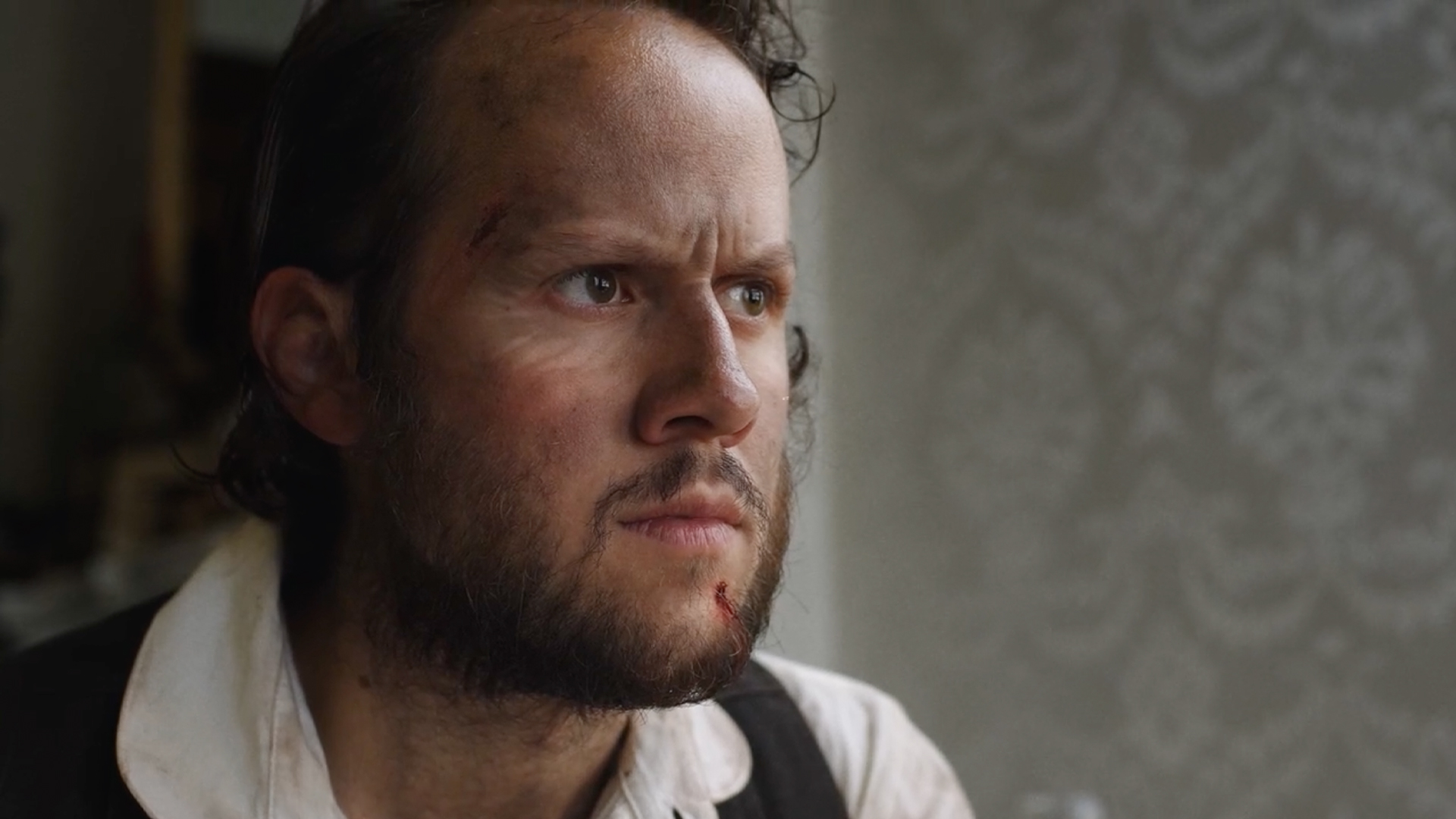
Casting, a crucial element of any film, played a pivotal role in bringing Ghaeini’s vision to life. John Cave (Time Traveler) was chosen for his ability to convey authentic, multi-layered reactions without dialogue.
“John Cave, a close friend and collaborator on previous projects, stood out for his ability to deliver authentic multi-layered reactions. Johns talent came with portraying various facets of “fear” The audience will be immersed and feel fear not from what they see, but from what John perceives. When we see that John is believably afraid, we are too. He carried the film beautifully.”
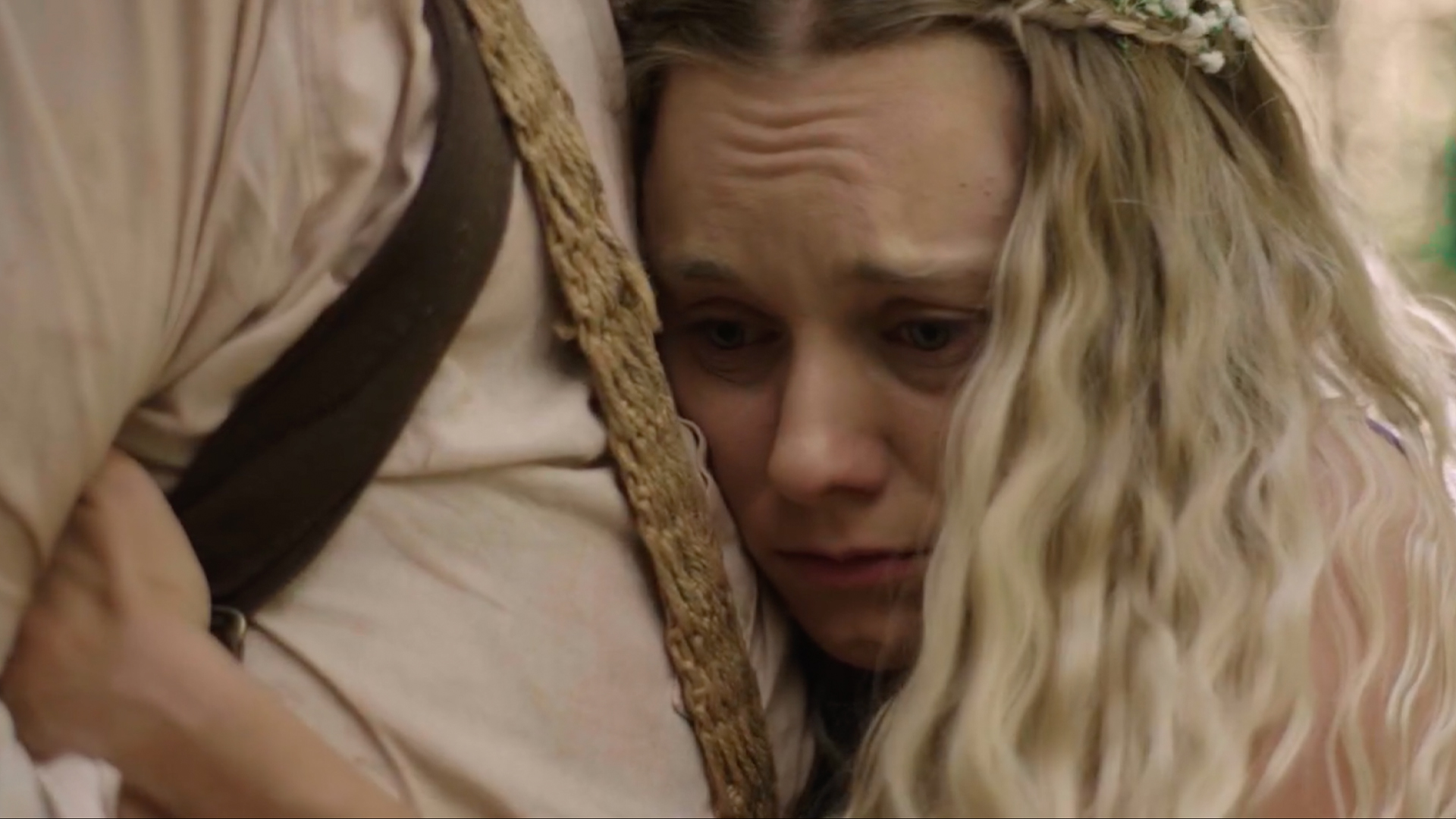
Stefania Barr, who brought depth to her character Wenna, became integral parts of the storytelling.
“Her reactions on screen are genuine and powerful. I specifically sought someone who could convey ‘heart-break’ in a single gaze, and she exceeded expectations, knocking it out of the park!”
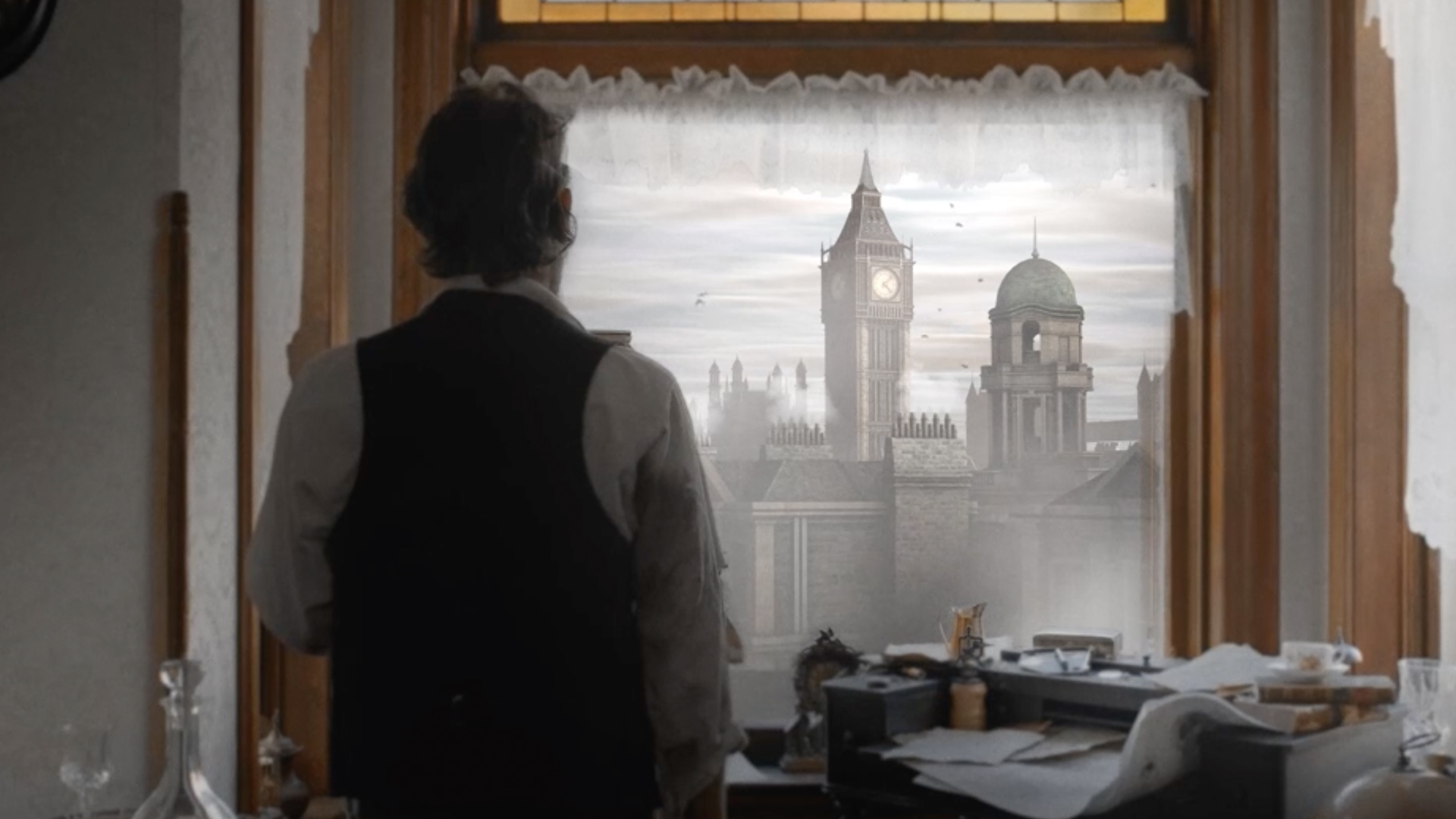
The film’s locations added another layer to its authenticity. Filming at the Heins Mansion in Provo, UT, provided the perfect Victorian atmosphere for the London house scenes. However, shooting in a storm drain at Dimple Dell Park in Sandy, UT, for the tunnel scenes brought its share of challenges, including negotiating the tunnel’s grooves, dealing with the cold November weather, and overcoming technical issues. Despite these hurdles, the end result made the efforts more than worthwhile.
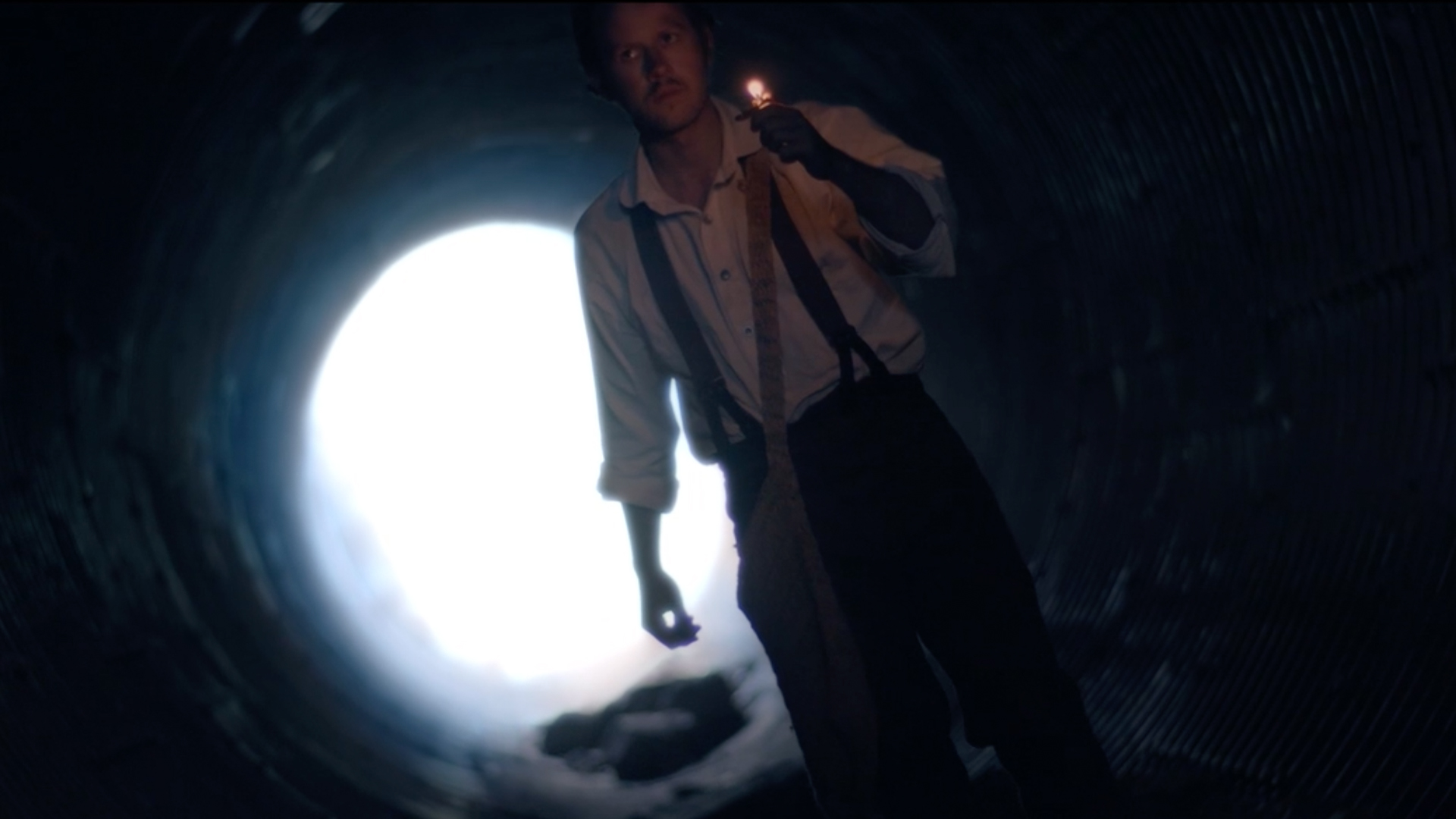
“Securing film permits in parks can be challenging. Negotiating the grooves of the tunnel, avoiding rocks, and running in the dark while dealing with the cold November weather made it an immensely challenging shoot. We encountered issues like losing feed on wireless gear, dealing with water levels, covering graffiti, and even blocking the tunnel entrance at times with duvetyn. Running a generator inside was ruled out due to safety concerns and audio disturbance, so we powered through with an abundance of batteries. Despite the challenges, the base camp outside the tunnel provided some respite and warmth. This location was certainly not for the faint of heart.”
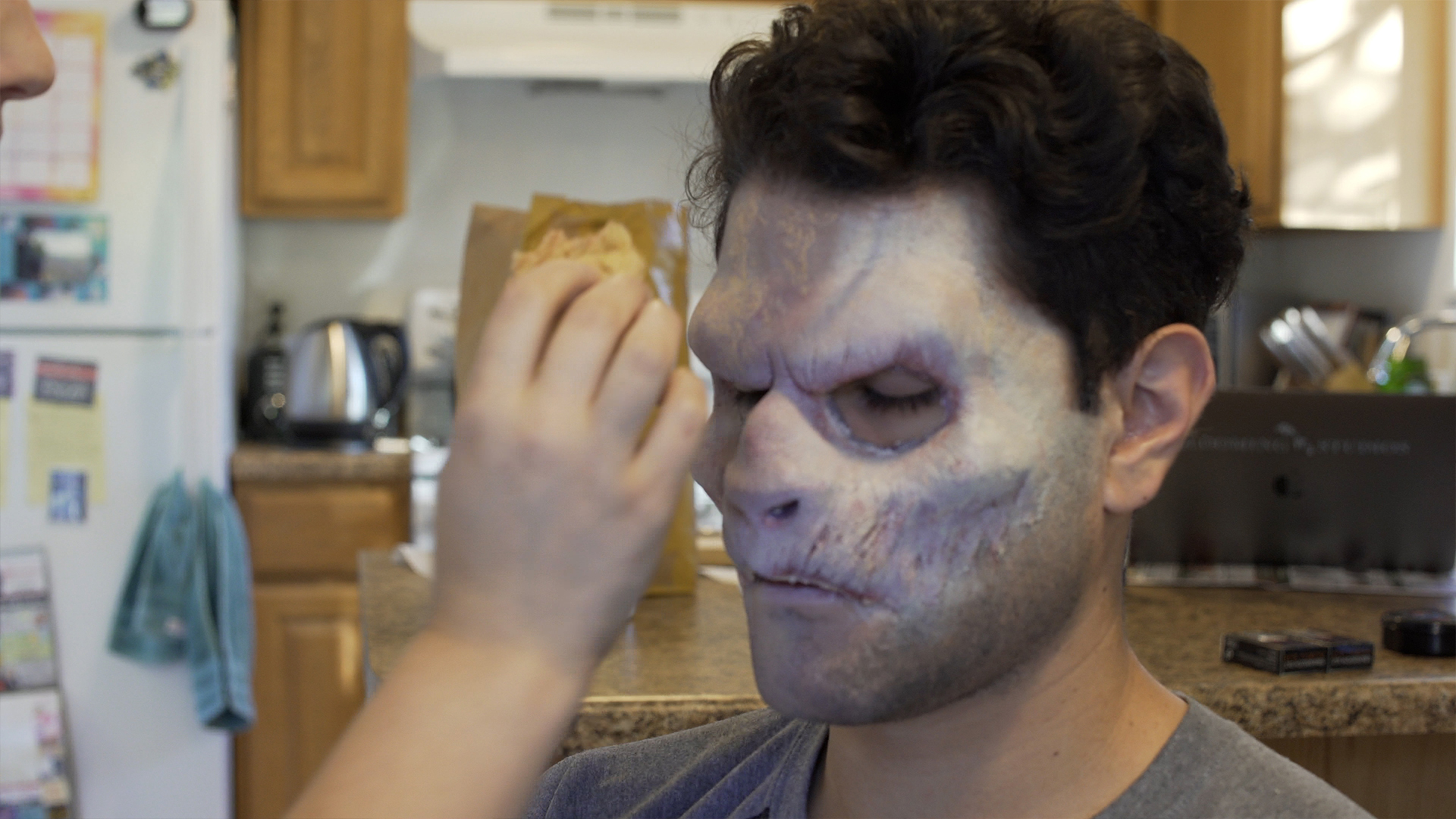
The eerie prosthetics for the Morlocks, crafted by makeup artist Julia Vinha, aimed to capture the subterranean evolution of a race envisioned by H.G. Wells.
“Months prior to filming, we collaborated extensively, examining references, conducting camera tests, and honing the right look. Our discussions focused on portraying the Morlocks as humans who had evolved over thousands of years underground, literally forming their own subterranean race, as envisioned by H.G. Wells. The prosthetics aimed to capture their pale complexion and distinctive large eyes, staying true to Wells’ description.”
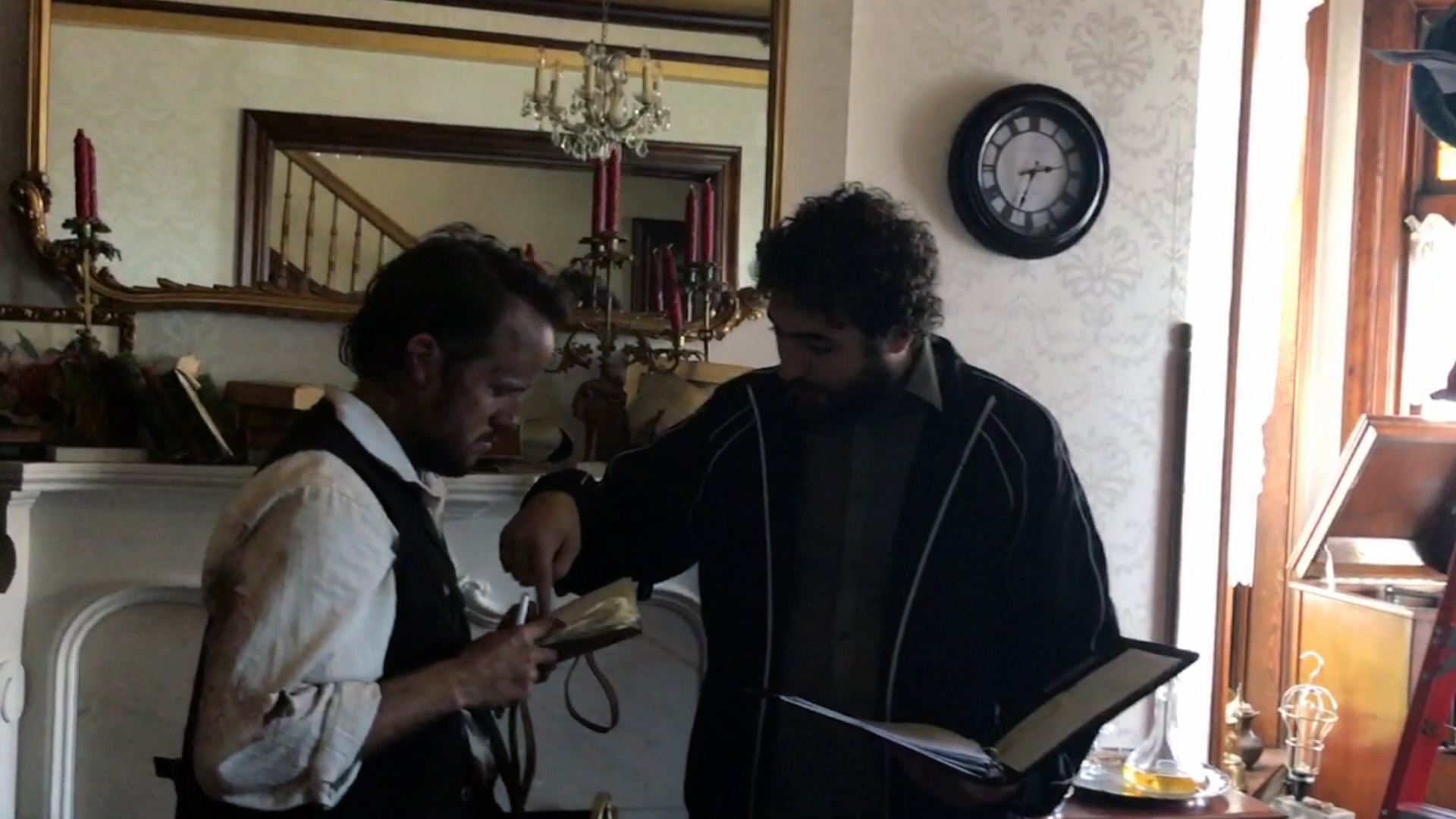
Ghaeini’s filmmaking journey with “The Time Machine” proved to be a transformative experience. The decision to craft a dialogue-free film challenged him to convey the narrative solely through visuals.
“One of best pieces of advice I received was the advice to “Show, don’t tell.” Taking this to heart, I challenged myself to craft a talk-less film, relying solely on visuals to tell the narrative. Sure I had Father Wells’ guidance, but it was an invaluable learning experience.”
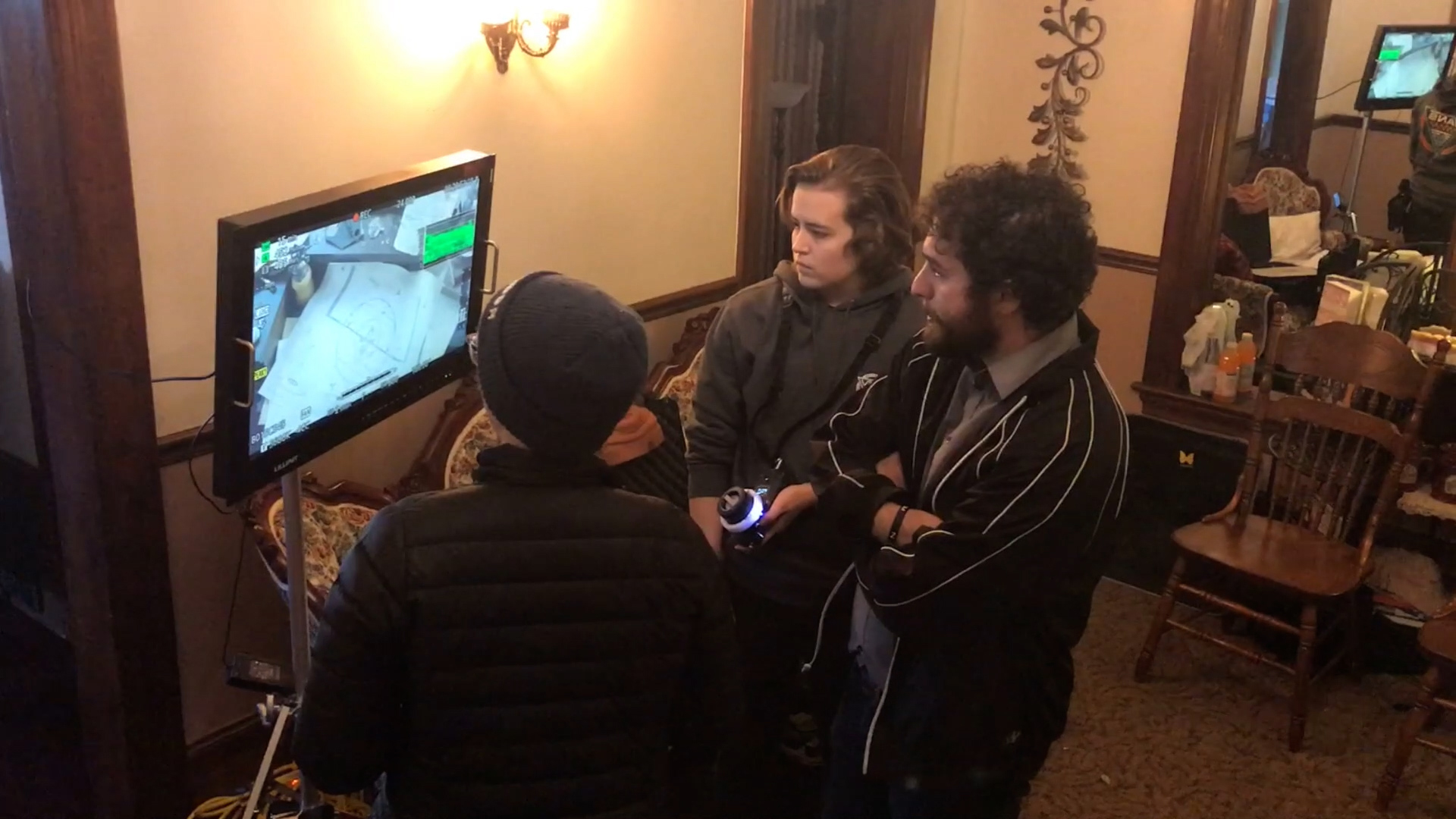
Beyond directing actors, he explored directing the energy of the film, considering elements such as camera motion, pacing, shot duration, and lighting.
“The Time Machine’ also served as a fun enticing exploration of the VFX world, and realizing the importance of thorough pre-visualization and preparation. These lessons are invaluable tools that I’ll undoubtedly carry forward into my future filmmaking endeavors.”
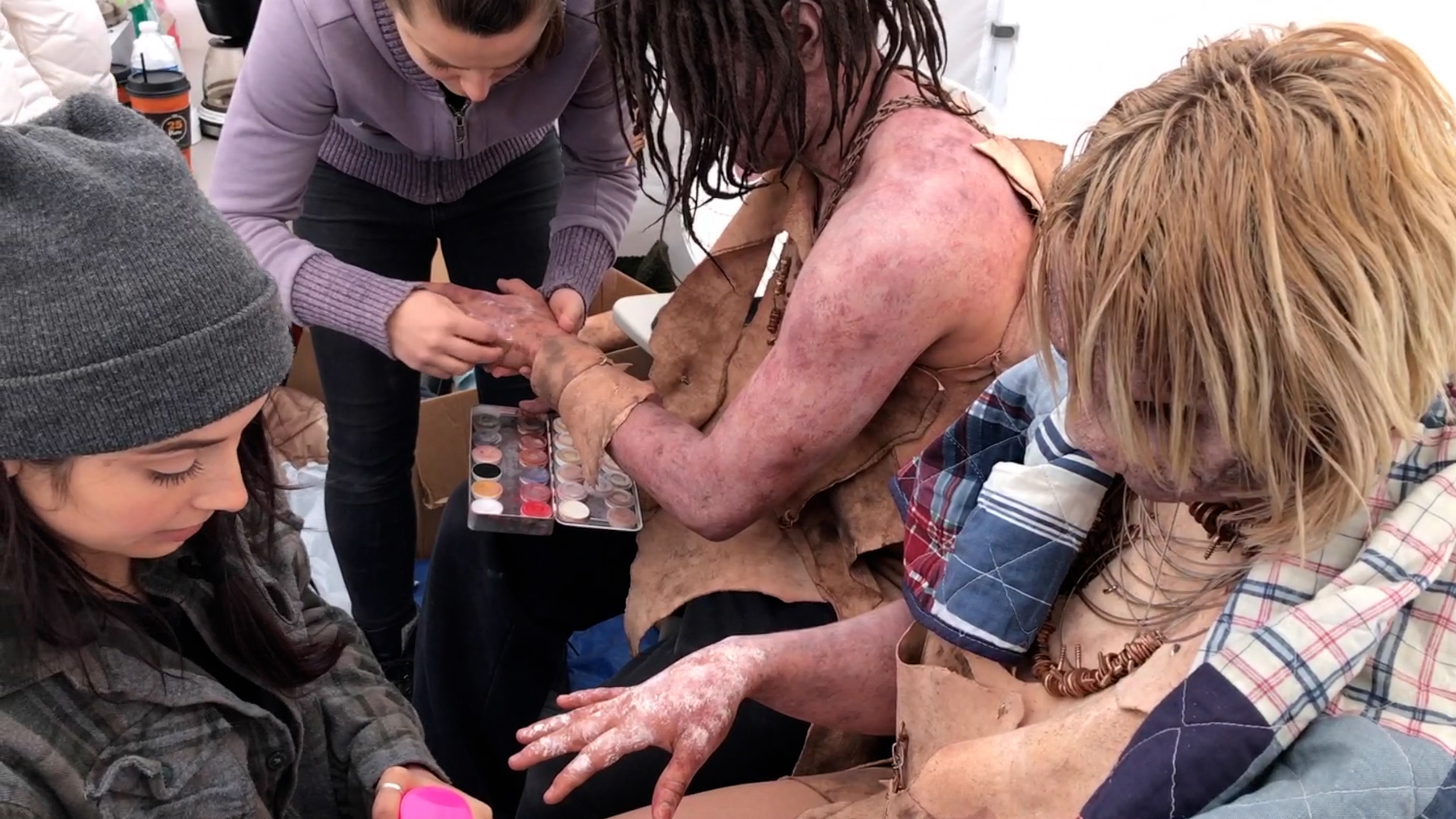
Ghaeini’s favorite aspect of the production was the collaboration with an incredible team of passionate filmmakers who became a tight-knit group of friends.
“To this day, some of us continue to celebrate Friendsgiving. There’s nothing better than creative storytelling alongside those you love and laugh with.”
As with any creative endeavor, challenges arose. The substantial pile of VFX work awaiting Ghaeini in the editing process, coupled with the role of editor, presented a stressful yet necessary learning experience.
“In hindsight, I may have been a tad over-ambitious. Managing the role of editor was already a significant task, and I further took on the responsibility of completing all the post VFX work. While it was necessary learning experience, it was an undeniably stressful process.”
For those curious about Ghaeini’s future endeavors, his website www.ebrahimghaeini.com and social media accounts, including Instagram @ebbiekg and the film’s Instagram account @thetimemachine.shortfilm , offer glimpses into his ongoing journey in the world of filmmaking.
Ebrahim Ghaeini Director Statement
As a filmmaker, I am driven by a passion for capturing the human experience in all its complexity and depth. With each project, I strive to shed light on the universal truths that connect us all, and to bring to life the stories that so often go untold.
My goal is to evoke emotion and provoke thought with every frame.
I believe that film has the power to inspire, challenge, and transform, and I am dedicated to using this medium to effect positive change in the world.
Whether through powerful dramas or thought-provoking documentaries, my goal is to create meaningful, impactful works of art that stay with viewers long after the credits have rolled.
